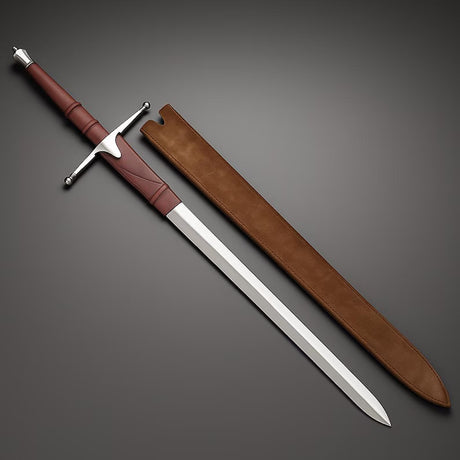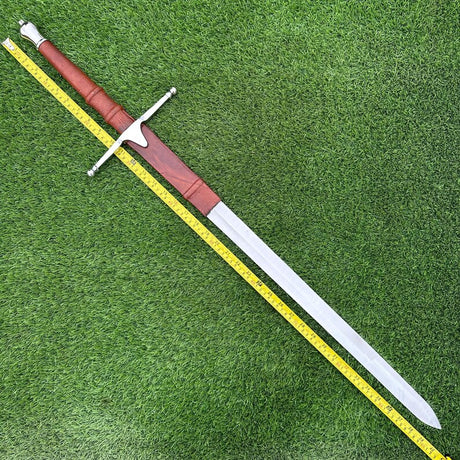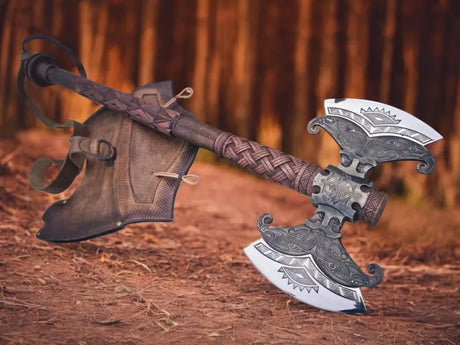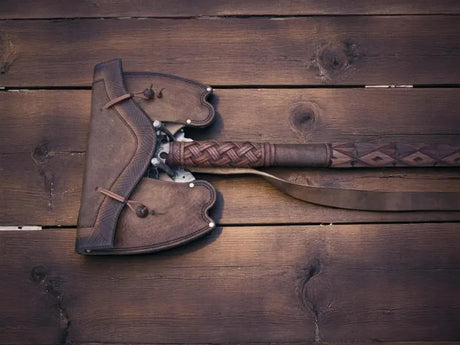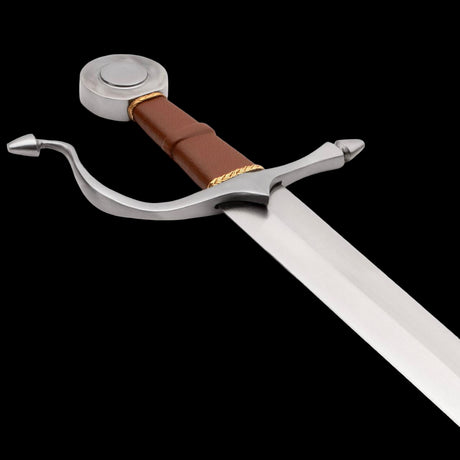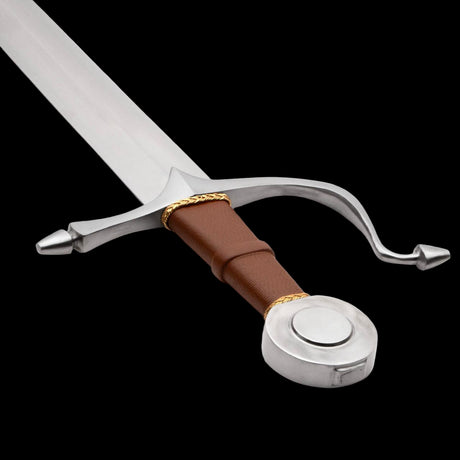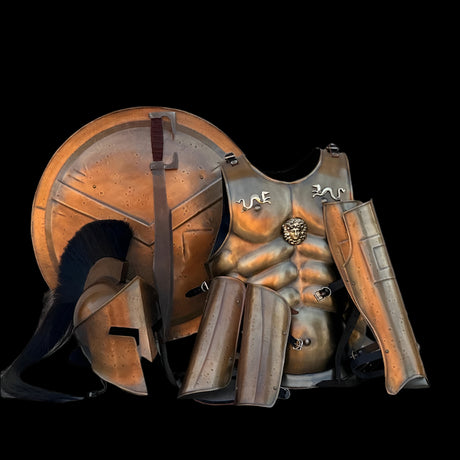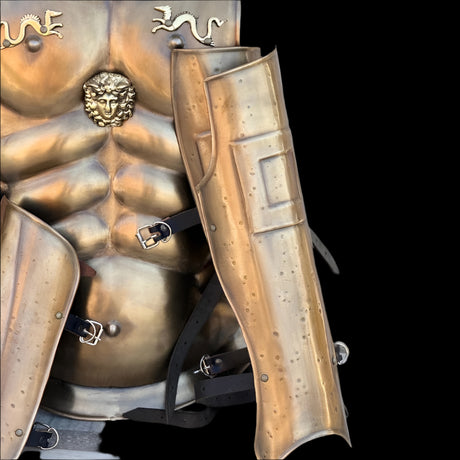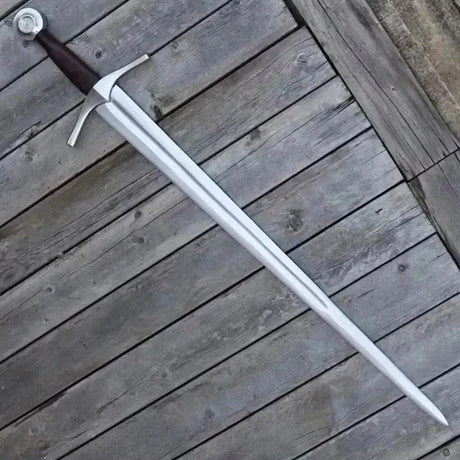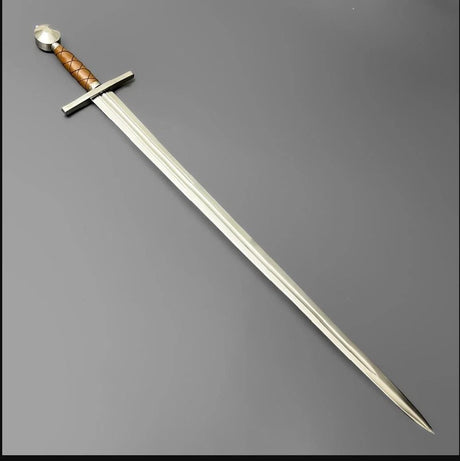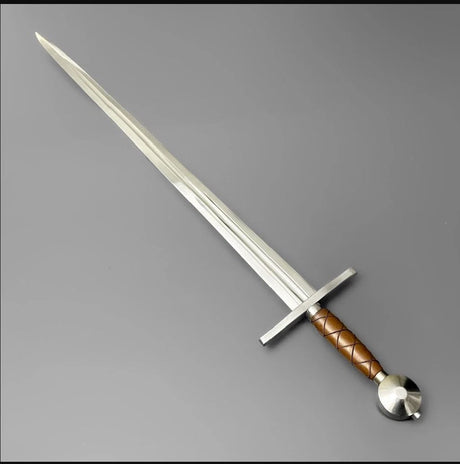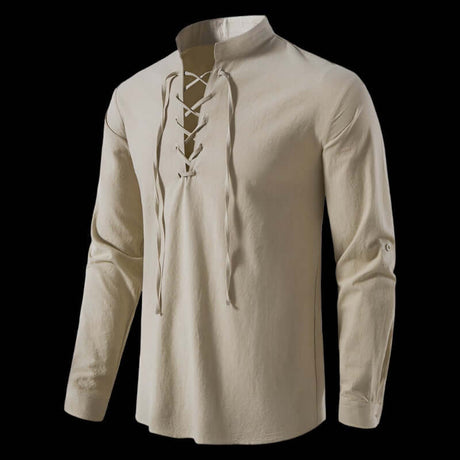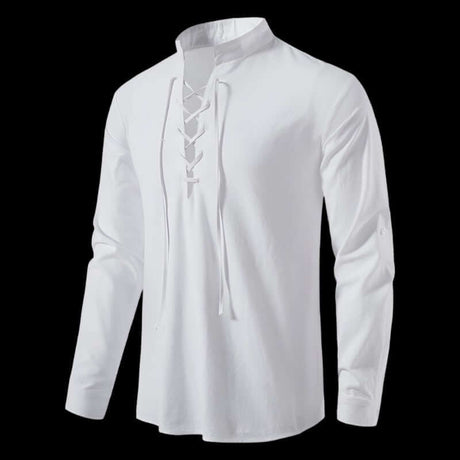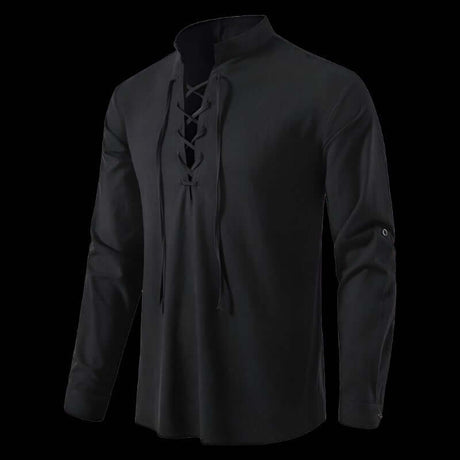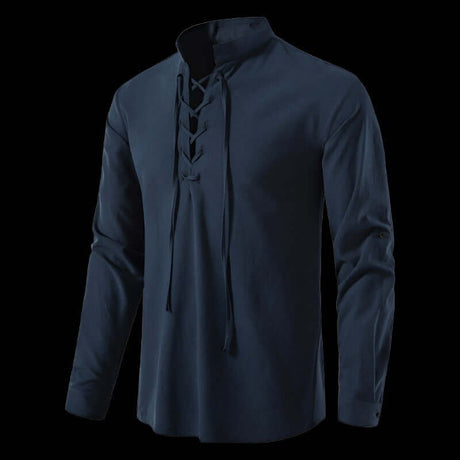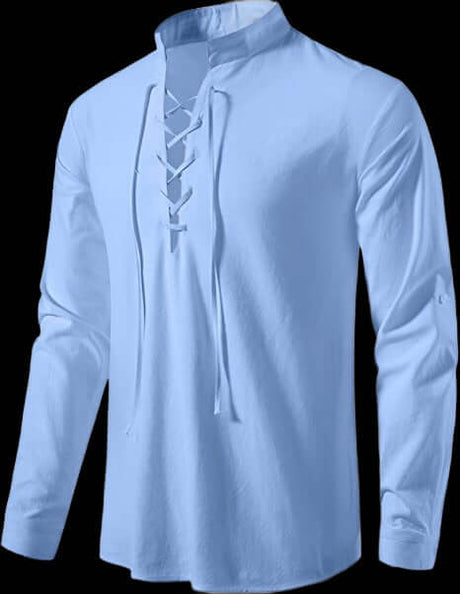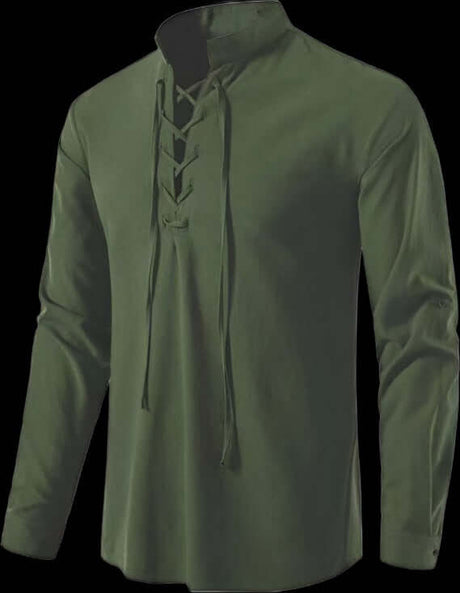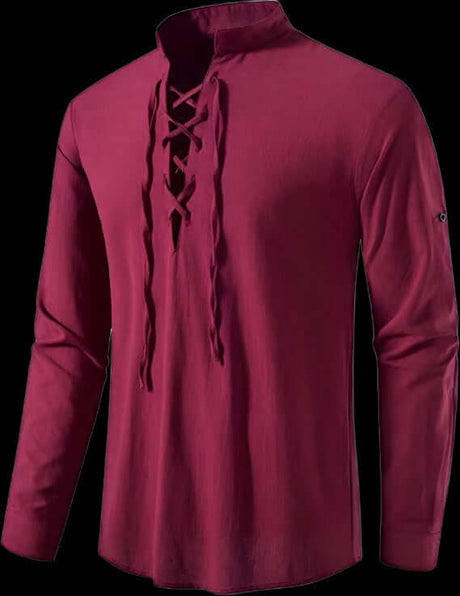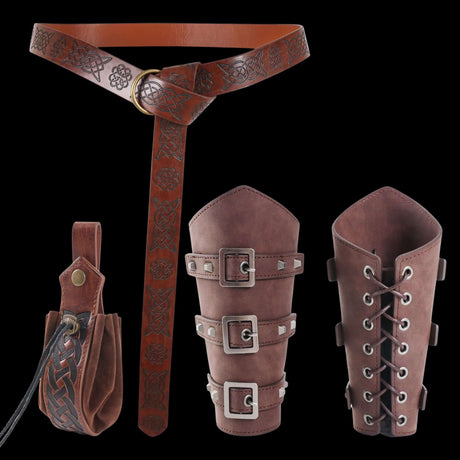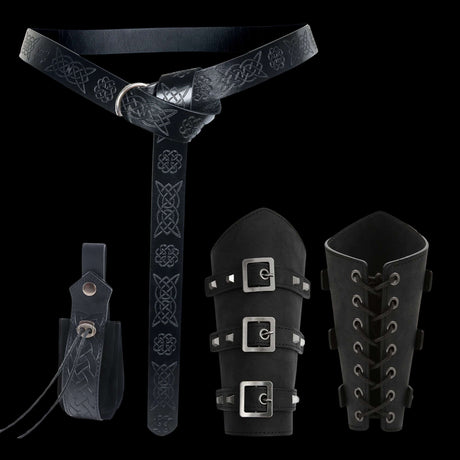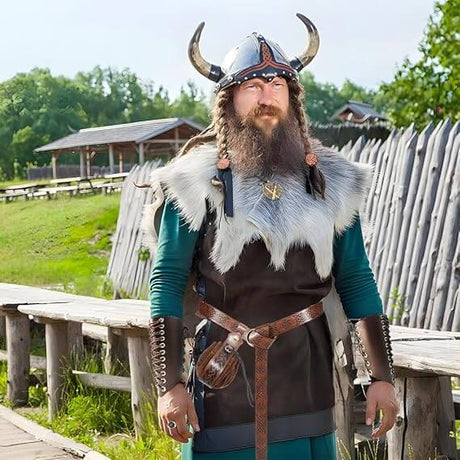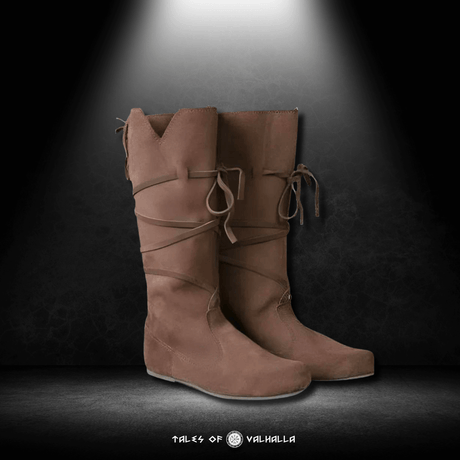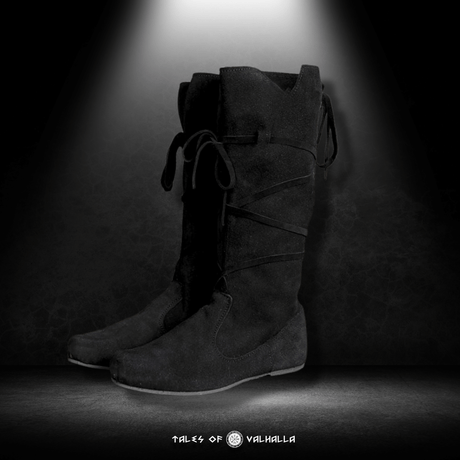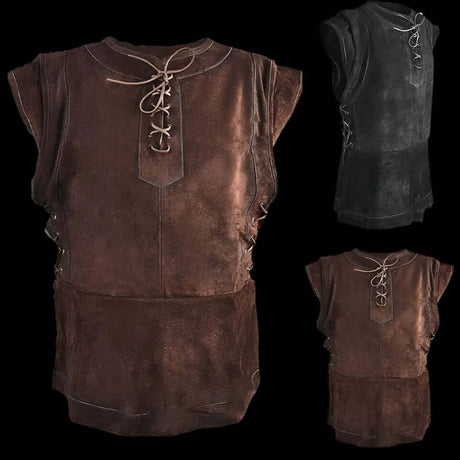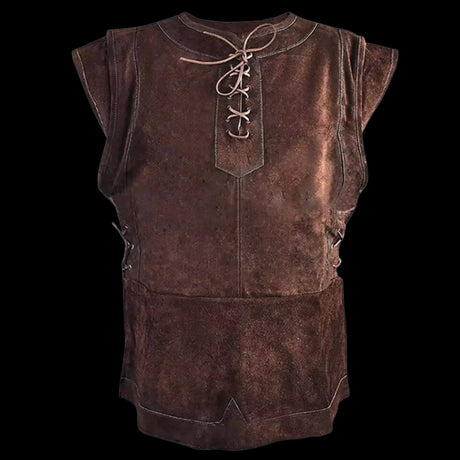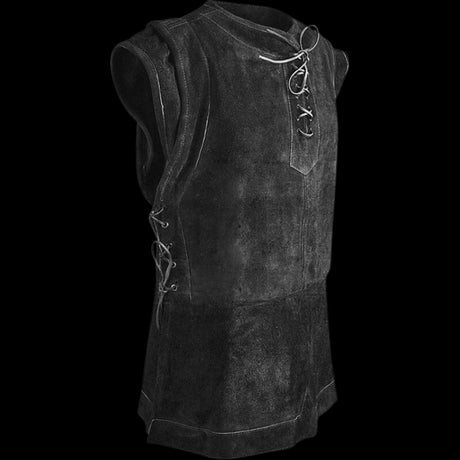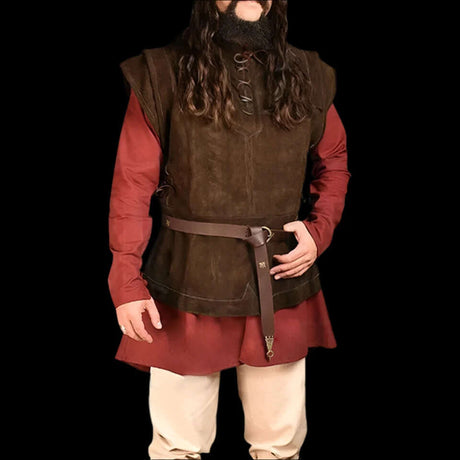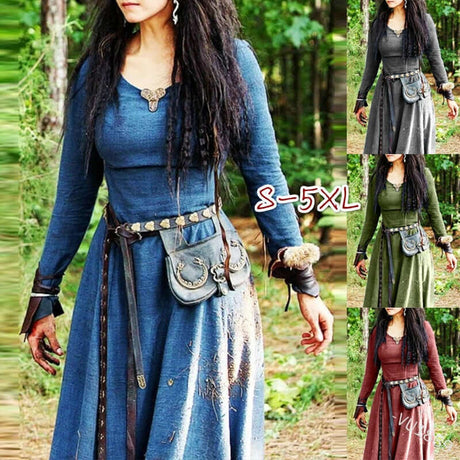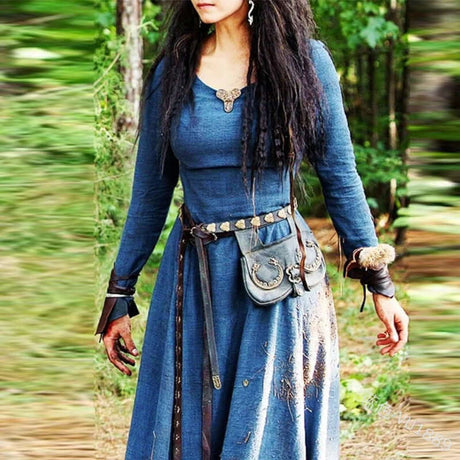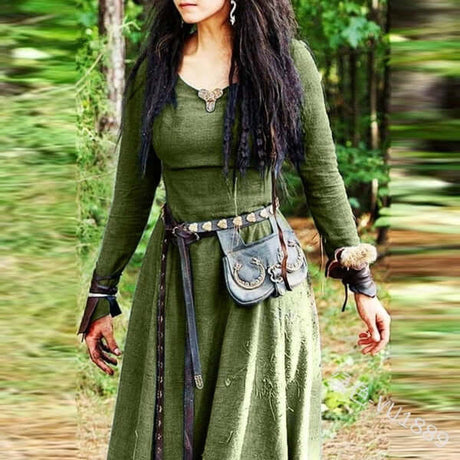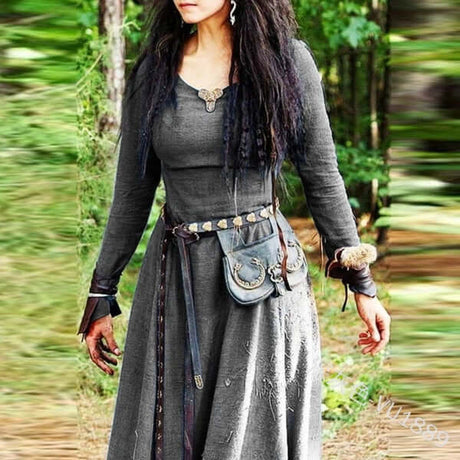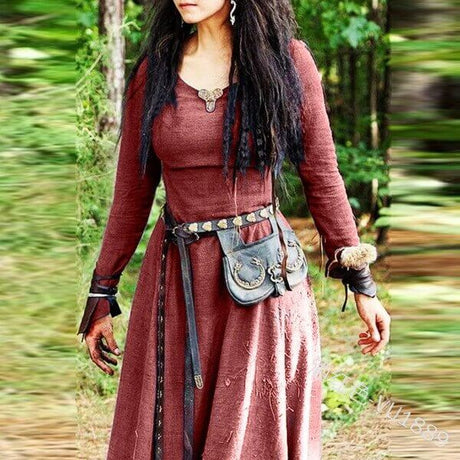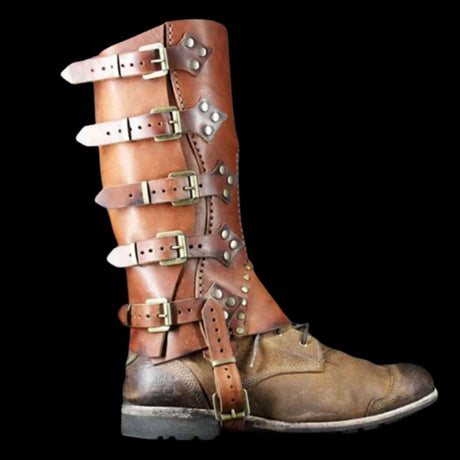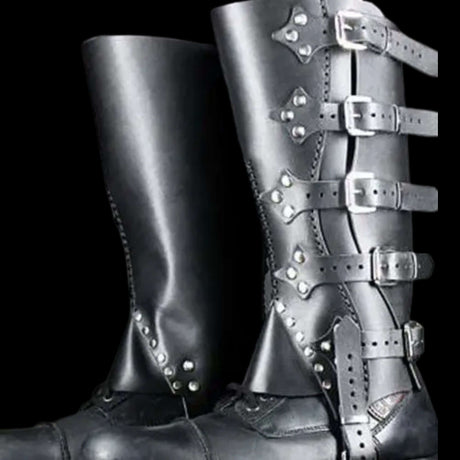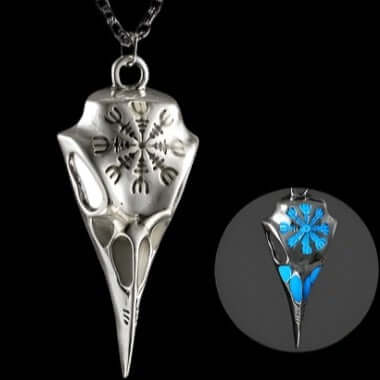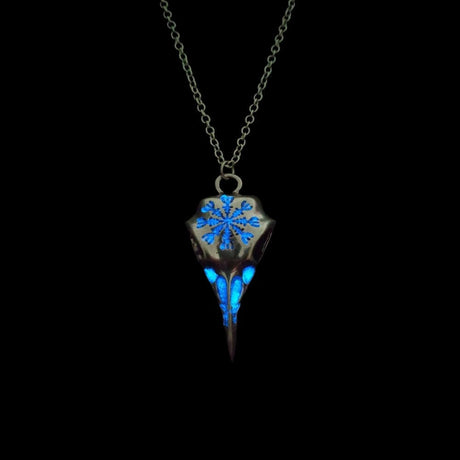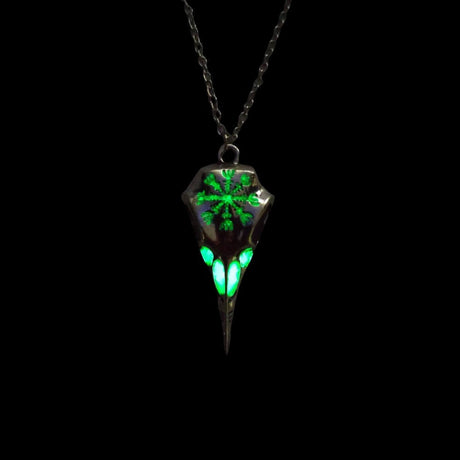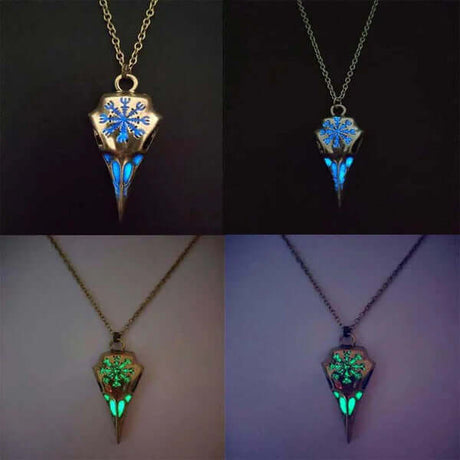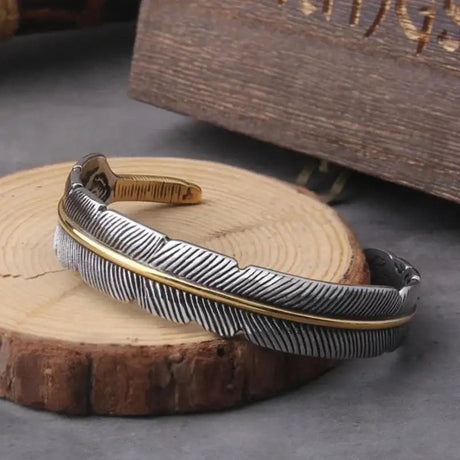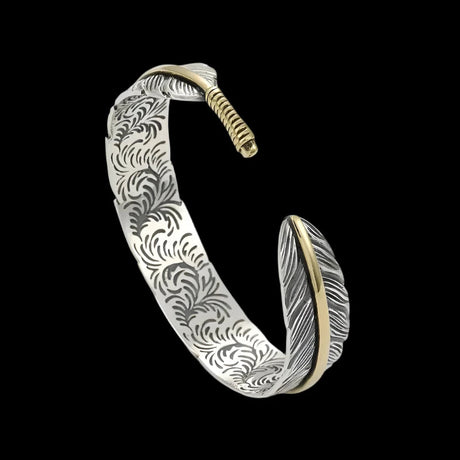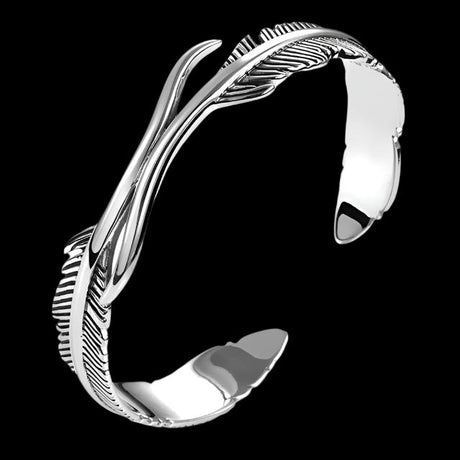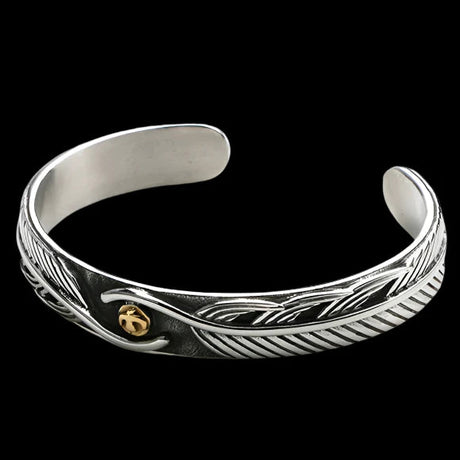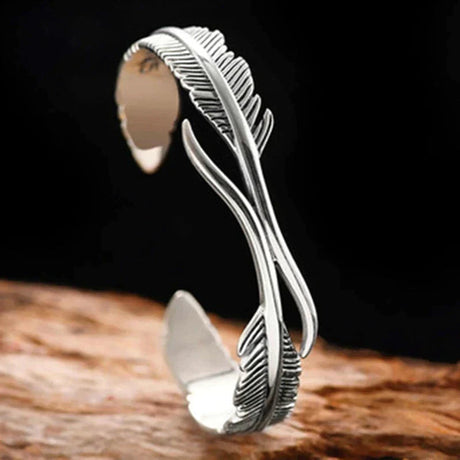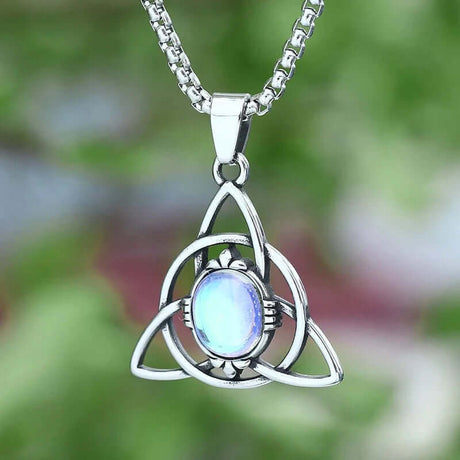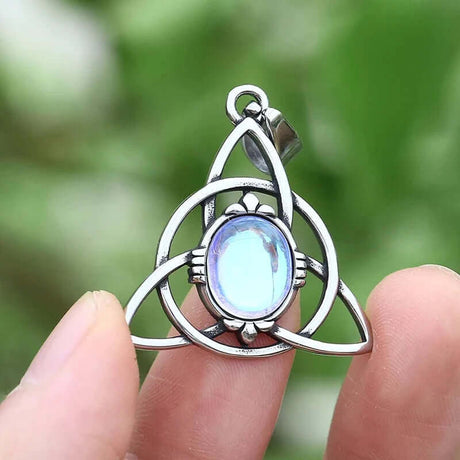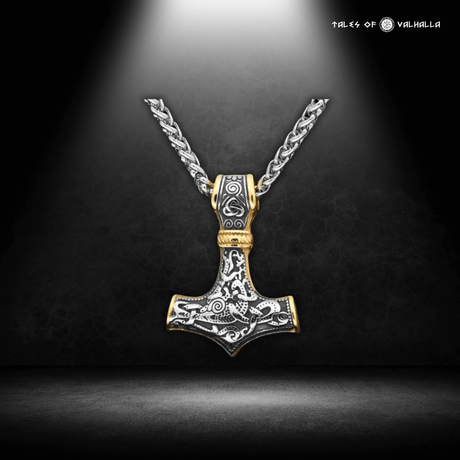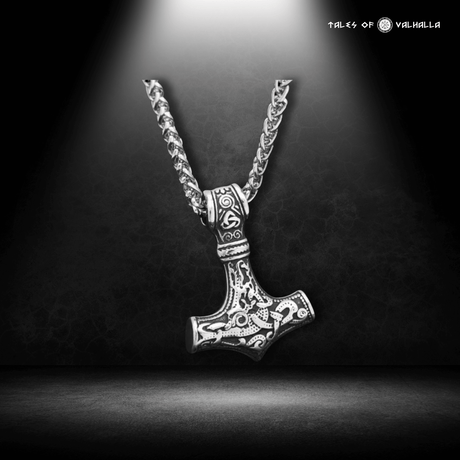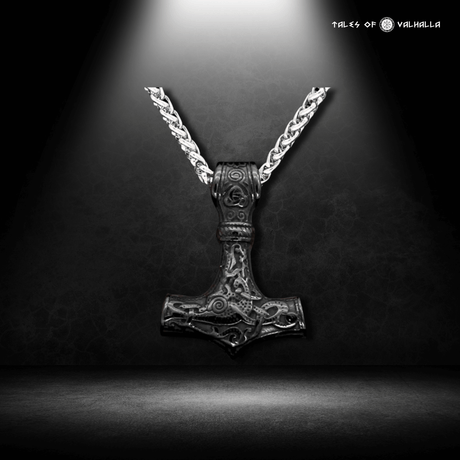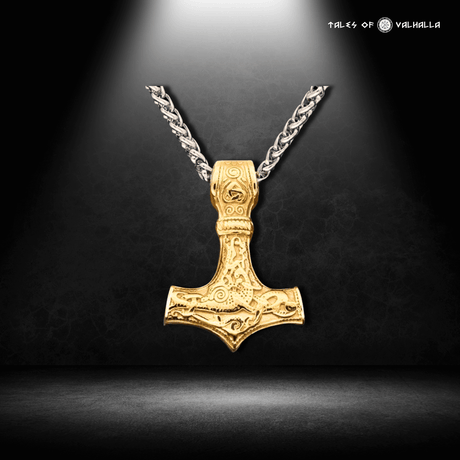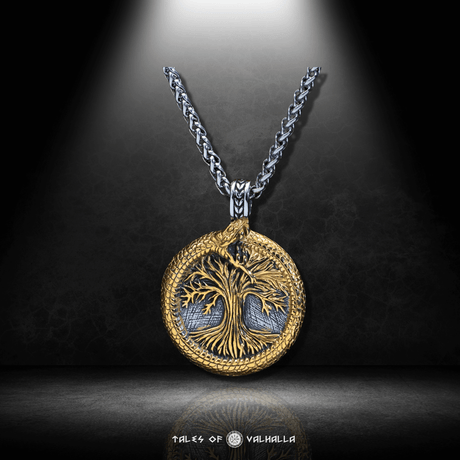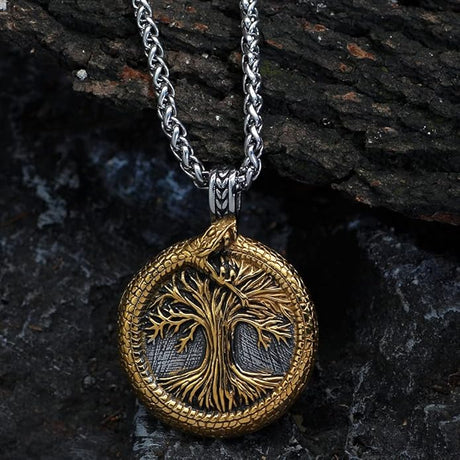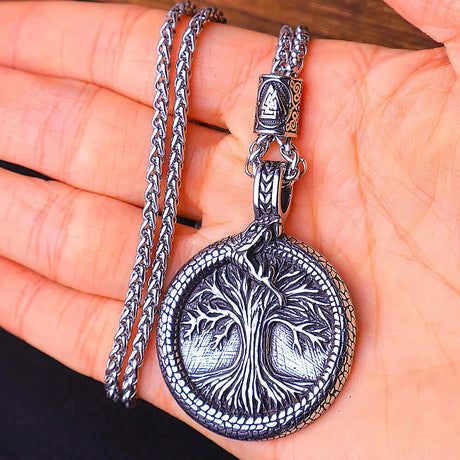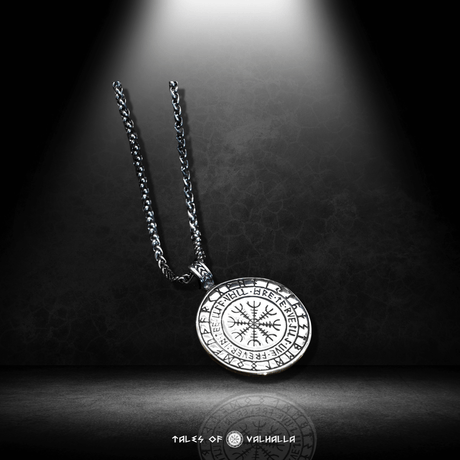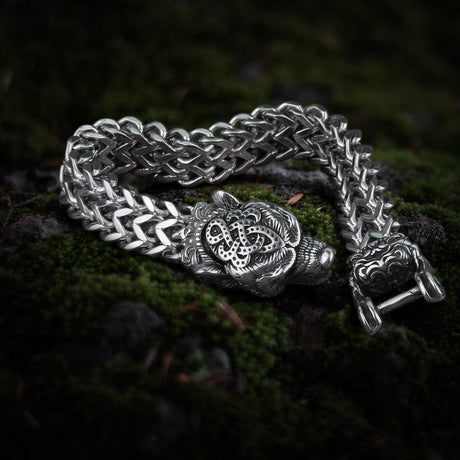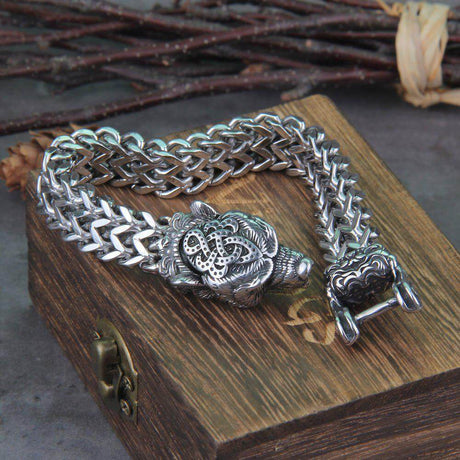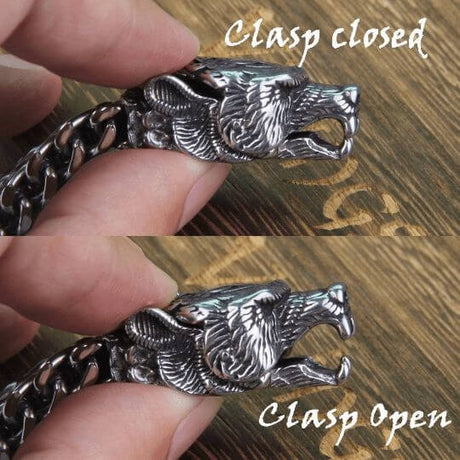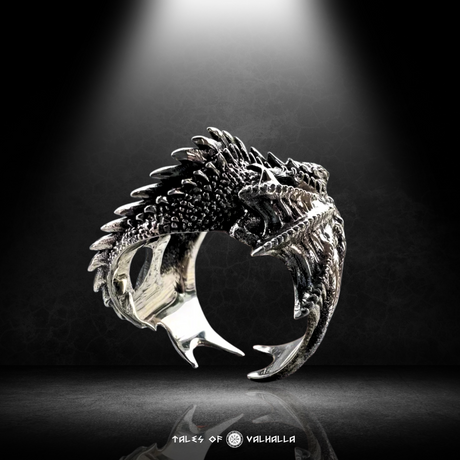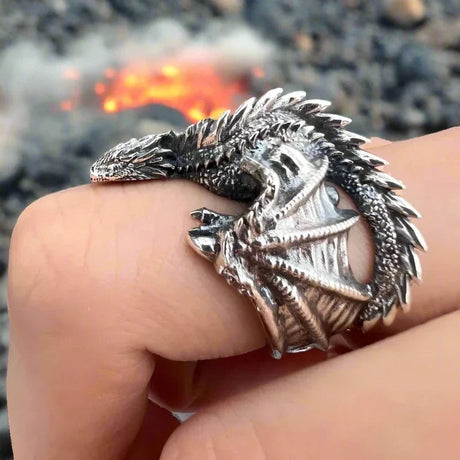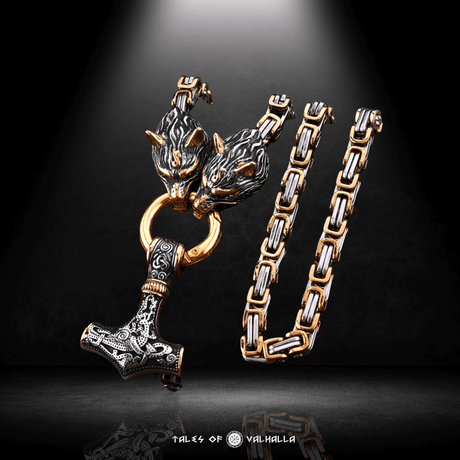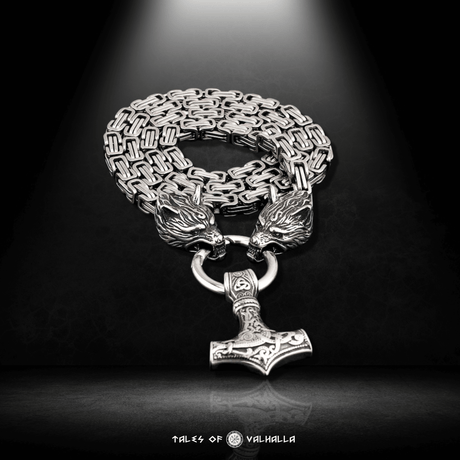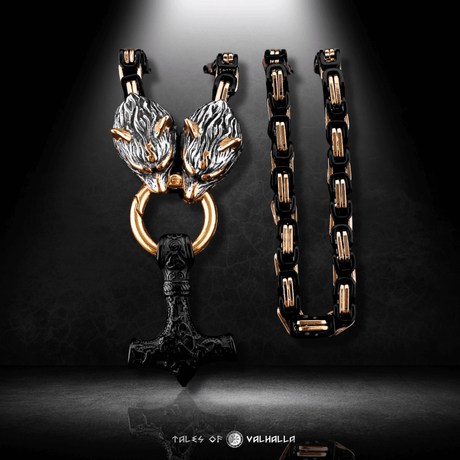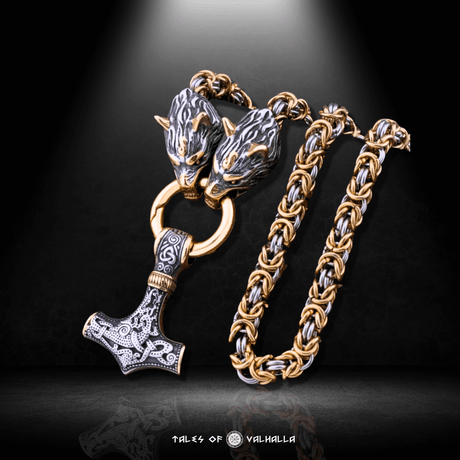In the intricate web of Norse mythology, dragons hold a prominent and fearsome place. Among these legendary creatures, Níðhöggr (sometimes spelled Nidhogg or Nithhogg) stands out as one of the most menacing and symbolic figures. Dwelling deep beneath the World Tree, Yggdrasil, Níðhöggr gnaws at its roots, representing destruction, decay, and the forces that work against the cosmic balance of life. For the Vikings, this dragon was not merely a creature of chaos but a harbinger of inevitable decay and the cycle of death and renewal.
In this blog, we’ll delve into the mythology surrounding Níðhöggr, his role in Norse cosmology, and his lasting symbolism in both ancient and modern interpretations. We’ll explore the various facets of this mythical dragon, answering questions such as “What is Níðhöggr?” and discussing his significance during Ragnarök and beyond.
Níðhöggr in Norse Mythology
In Norse mythology, the cosmos is centered around Yggdrasil, the great World Tree that connects the Nine Realms. The health and stability of the universe are linked to the well-being of this mighty tree. Yggdrasil’s roots extend into various realms, including Niflheim, a cold and dark underworld where the dragon Níðhöggr resides.
Níðhöggr is a monstrous serpent or dragon whose primary purpose is to gnaw at the roots of Yggdrasil. His constant chewing weakens the foundation of the tree, symbolizing the forces of decay that threaten the order of the universe. In Viking belief, the universe is cyclical—there are always forces of creation and destruction at play. While the gods, particularly the Æsir, work to maintain cosmic order, figures like Níðhöggr represent the inevitable entropy and moral decay that leads to collapse and renewal.
Níðhöggr’s Role in Yggdrasil: A Constant Threat to the World Tree
The relationship between Níðhöggr and Yggdrasil is crucial to understanding the dragon’s importance in Norse cosmology. Yggdrasil is more than just a tree—it is the lifeline of the universe, connecting all the realms, including Midgard (the world of humans), Asgard (the home of the gods), and Helheim (the land of the dead). The health of Yggdrasil is synonymous with the health of the universe itself.
By gnawing at Yggdrasil’s roots, Níðhöggr threatens the cosmic order. His role is a reminder of the inevitable forces of destruction, corruption, and decay that affect all living things. No matter how strong or beautiful something is, it is always subject to the passage of time and the forces that erode it. The Vikings understood this as part of the natural cycle—Níðhöggr represents the end of things, but his destruction also sets the stage for rebirth.

Níðhöggr’s Role in Yggdrasil:
In many ways, Níðhöggr embodies entropy—the slow, inevitable decline that leads to the dissolution of order and structure. However, this decay is not seen as purely negative. In Norse mythology, destruction is a necessary precursor to creation. Without Níðhöggr’s gnawing, there can be no renewal, no regeneration of life.
Níðhöggr and Ragnarök: His Role in the End of the World
In Norse mythology, the concept of Ragnarök represents the end of the world as we know it—a catastrophic series of events in which the gods face their ultimate battles, the world is engulfed in chaos, and the universe is destroyed. But Ragnarök also brings about a rebirth, a new world rising from the ashes of the old.
Níðhöggr plays a pivotal role in Ragnarök, the apocalyptic battle. According to the ancient Norse poem Völuspá (The Prophecy of the Seeress), Níðhöggr is foretold to rise from the depths of Niflheim during the final battle. At this time, he will feast on the bodies of the dead, particularly those who have led corrupt and dishonorable lives. His role as a devourer of corpses represents the punishment of the wicked and reinforces his association with decay and retribution.
In the aftermath of Ragnarök, Níðhöggr’s presence lingers. As he gnaws on the remnants of the world, he reminds us that even after the gods and heroes have perished, decay is an inescapable part of existence. However, the myth also suggests that after the destruction, a new world will be born. Thus, Níðhöggr is not just a symbol of death but also of the necessary destruction that precedes renewal.
What is Níðhöggr? Understanding the Symbolism of the Dragon
To fully grasp the significance of Níðhöggr, we must look beyond his role as a dragon and explore the deeper symbolism that he embodies in Norse mythology. The question of “What is Níðhöggr?” is not only about his physical form but about what he represents in the mythological context.
-
Symbol of Corruption and Decay: In Norse mythology, there is a constant tension between the forces of order (represented by the gods) and the forces of chaos (represented by creatures like Níðhöggr). By gnawing at the roots of Yggdrasil, Níðhöggr represents the forces of corruption that erode the stability of the universe. His presence serves as a reminder that even the strongest and most enduring structures are vulnerable to decay.
-
Harbinger of Death and Retribution: Níðhöggr’s role as a devourer of the dead in Ragnarök ties him to the concept of retribution. In the Norse understanding of the afterlife, those who lead honorable lives are rewarded, while the wicked are punished. Níðhöggr feasts on the corpses of the wicked, serving as a symbol of the inevitable consequences of moral corruption. His gnawing at Yggdrasil’s roots can be seen as a metaphor for the slow erosion of values and ethics in society.
-
Necessary Force of Destruction for Rebirth: Although Níðhöggr is often viewed as a negative force, his actions are a necessary part of the cosmic cycle. In Norse mythology, the world operates in cycles of creation, destruction, and renewal. Without Níðhöggr’s destruction, there can be no rebirth. His gnawing at the roots of Yggdrasil, though destructive, ultimately makes way for new life to emerge.
Níðhöggr’s Place Among Other Mythical Beings
In the complex hierarchy of Norse mythology, Níðhöggr does not operate in isolation. His interactions with other mythical beings help illuminate his role in the broader mythological framework.

Níðhöggr’s Place Among Other Mythical Beings
Ratatoskr, the Messenger Squirrel
One of the most interesting relationships involving Níðhöggr is with Ratatoskr, the mischievous squirrel that scurries up and down Yggdrasil. Ratatoskr acts as a messenger, carrying insults between Níðhöggr, who resides at the roots of the tree, and a majestic eagle perched at the top of Yggdrasil. The constant exchange of insults and animosity between these two creatures highlights the tension between wisdom (represented by the eagle) and decay (represented by Níðhöggr). This interaction illustrates the ongoing struggle between opposing forces in the cosmos.
The Eagle of Wisdom
At the opposite end of Yggdrasil is the eagle, a symbol of wisdom and foresight. The conflict between the eagle and Níðhöggr serves as a metaphor for the balance between life and death, creation and destruction. The eagle, perched high in the heavens, watches over the world, while Níðhöggr gnaws at its foundations. Together, they represent the cyclical nature of existence, where destruction and wisdom are interwoven.
Níðhöggr’s Legacy in Modern Culture
While Níðhöggr originates in ancient Norse mythology, his symbolism has endured through the ages, finding a place in modern culture. The dragon’s representation of destruction, decay, and retribution resonates with contemporary themes, particularly in literature, video games, and even environmental discussions.
Níðhöggr in Popular Media
In modern media, Níðhöggr has been featured in various forms. For example, he appears in video games like Final Fantasy XIV, where he is depicted as a powerful adversary representing decay and destruction. His presence in such games often reinforces his association with chaos and his role as a final challenge that players must overcome.
Similarly, Níðhöggr has appeared in works of fiction, where he is portrayed as a dragon of immense power and evil, often standing in opposition to heroes who strive to restore balance or protect the world. These modern interpretations maintain the essence of Níðhöggr as a destructive force, while also adapting him to fit new narratives.
Níðhöggr as a Metaphor for Environmental Decay
In the context of modern environmentalism, Níðhöggr’s gnawing at the roots of Yggdrasil has been likened to the destructive actions of humanity against the natural world. Just as Níðhöggr undermines the cosmic order by attacking the World Tree, modern interpretations often use him as a symbol for the ways in which human activities—such as deforestation, pollution, and climate change—are weakening the very systems that sustain life on Earth.
This interpretation of Níðhöggr as a metaphor for environmental decay serves as a powerful reminder of the consequences of unchecked destruction and the need for balance between human activities and the natural world.
Níðhöggr’s Enduring Symbolism: Decay, Destruction, and Renewal
The legacy of Níðhöggr extends far beyond the pages of ancient Norse sagas. His presence in mythology and modern culture speaks to the universal themes of destruction, decay, and renewal. Níðhöggr reminds us that all things, no matter how strong, are subject to the forces of time and entropy. However, his role also highlights the cyclical nature of life—where destruction makes way for new beginnings.
As we look at the world around us, we can see the enduring relevance of Níðhöggr. Whether in the context of personal growth, environmental sustainability, or societal change, the dragon’s gnawing represents the challenges and obstacles that lead to transformation. Just as Yggdrasil continues to stand despite Níðhöggr’s attacks, so too can we find strength and renewal in the face of adversity.










